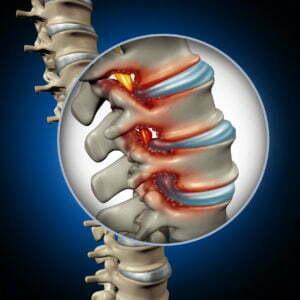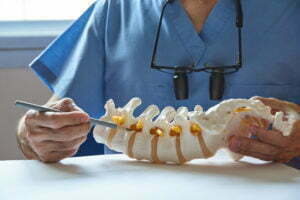12 Nov What Is Spinal Stenosis And How To Manage It
Spinal stenosis is a condition that includes the narrowing of the spaces in the spine. It typically occurs as people age and is most often seen in the cervical and lumbar areas in the spine. While many people who experience spinal stenosis are asymptomatic and do not feel any pain, there are also many people who do experience a significant amount of pain from the condition. Spinal stenosis tends to worsen over time as it is usually caused by normal wear and tear on the back. There are a variety of different treatment options and pain management techniques available for those suffering from spinal stenosis.

The two main types of spinal stenosis are cervical and lumbar stenosis. Cervical stenosis occurs in the neck region and lumbar stenosis occurs in the lower back region. Patients who suffer from cervical stenosis will typically feel numbness or weakness in the extremities, difficulty walking, neck pain, or potential bowel or bladder dysfunction. Lumbar stenosis typically causes numbness or weakness in the lower extremities, pain or cramping in the legs or generalized back pain. It can be difficult to determine the exact cause of spinal stenosis, but some of the more commonly associated conditions include bone overgrowth, herniated discs, tumors, spinal injuries, and thickened spinal ligaments.
While spinal stenosis may start off asymptomatic, it tends to worsen as time goes on. Left untreated, spinal stenosis can lead to numbness and weakness causing difficulty walking, balance problems, incontinence, and in very severe cases, even paralysis. Spinal stenosis is typically diagnosed through various imaging tests such as x-rays, MRIs, and CT scans. After diagnosing spinal stenosis, treatment usually begins as conservatively as possible because the spine is such a delicate part of the body.
Medication is typically the first step in managing spinal stenosis. Medications can encompass anything from over the counter pain relievers to anti-depressants and anti-convulsants to prescription opioids. While medication can work in the short term, it typically fails to manage pain when used long term. Therefore, physical therapy is typically recommended with medication. Physical therapy can help to build up muscles in the back to support the spine and improve balance, flexibility, and strength. Steroid injections are another possible pain management tool that greatly helps to reduce inflammation which may be causing pain. If all else fails, there are various surgeries that can be performed. However, surgery is rarely recommended to help with spinal pain management.
As we age, our bodies begin to break down and show the wear and tear from years past. In its earliest stages, spinal stenosis may not cause pain for the patient. However, as spinal stenosis progresses, many patients begin to feel pain, weakness or have trouble performing day to day activities. While there is not a cure for spinal stenosis, there are various pain management techniques that can greatly help patients to have a better quality of life. Working with Illinois pain management doctors can help patients develop an effective treatment plan that can help them live life with significantly less pain.


